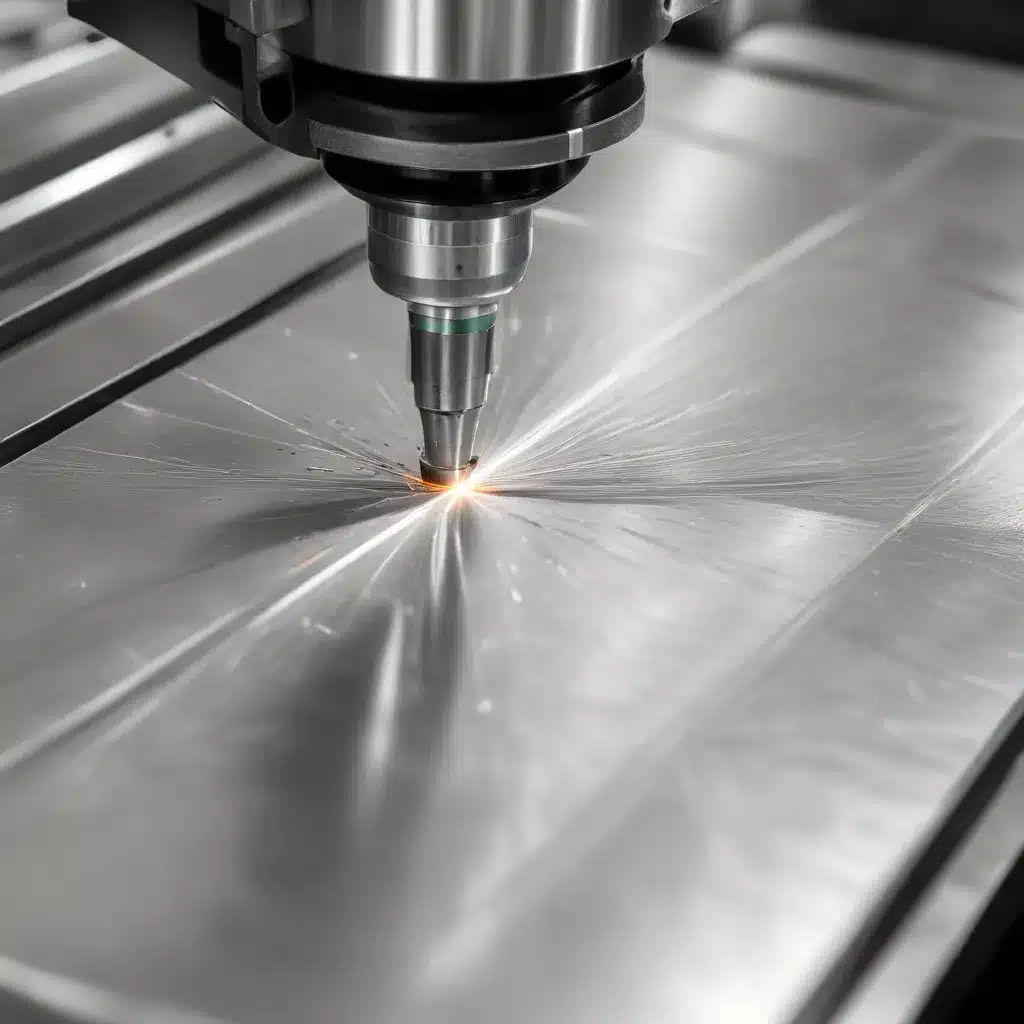
As an experienced welder and metal fabricator, I’ve had the privilege of working with a wide range of materials and techniques over the years. One method that’s particularly intriguing to me is the intersection of laser technology and friction stir welding, especially when it comes to aluminum alloys. Let me share my insights on how this innovative approach can unlock new possibilities in the world of fabrication.
Harnessing the Power of Laser-Assisted Friction Stir Welding
When it comes to welding aluminum alloys, we’ve long grappled with the challenge of maintaining consistent joint quality and mechanical properties. Traditional techniques like tungsten inert gas (TIG) welding, while effective, can often result in uneven microstructural arrangements, leading to variable tensile strengths and hardness profiles. However, the emergence of laser-assisted friction stir welding (LAFSW) has opened up a new frontier in our quest for superior aluminum alloy fabrication.
The beauty of LAFSW lies in its ability to harness the synergistic effects of two powerful welding techniques. By combining the precision and heat input control of laser welding with the solid-state nature of friction stir welding, we can achieve a level of control and refinement that was once unimaginable.
Microstructural Refinement: The Key to Improved Performance
One of the hallmarks of LAFSW is its remarkable ability to refine the microstructure of aluminum alloy joints. As the friction stir tool plunges into the material, it generates intense heat and mechanical deformation, effectively recrystallizing the grains and creating a fine, uniform structure. This refined microstructure is a game-changer, as it directly translates to enhanced mechanical properties.
In my experience, the transversally sampled LAFSW specimens often exhibit mean grain sizes in the range of 1,148 microns, while the longitudinally sampled specimens can display even finer grains, with sizes as low as 732 microns. This staggered arrangement of the microstructure is a testament to the precision and control inherent in the LAFSW process.
Unlocking Superior Tensile and Hardness Characteristics
The impact of this microstructural refinement on the mechanical properties of LAFSW aluminum alloy joints is simply astounding. Take, for instance, the ultimate tensile strength (UTS) of the longitudinally sampled specimens, which can reach a remarkable 13.38 MPa. In contrast, the transversally sampled specimens, with their slightly coarser grains, may only achieve a UTS of 8.78 MPa – a significant difference that highlights the importance of optimizing the process parameters.
The microhardness profile is equally compelling, with the longitudinally sampled specimens showcasing a fluctuating range between 30 HV and 80 HV. Contrast this with the transversally sampled specimens, which max out at around 57 HV. The ability to precisely control the microstructural arrangement through LAFSW is truly the key to unlocking superior mechanical performance.
Seamless Integration with Existing Fabrication Workflows
One of the aspects I find particularly appealing about LAFSW is its seamless integration with existing fabrication workflows. Unlike some emerging welding technologies that may require specialized equipment or extensive training, LAFSW can be readily incorporated into existing TIG welding setups with relatively minor modifications.
This compatibility allows fabricators like myself to leverage our existing expertise and infrastructure, while still reaping the benefits of enhanced joint quality and mechanical properties. It’s a win-win scenario that empowers us to push the boundaries of what’s possible without completely upending our established processes.
Embracing the Future of Aluminum Alloy Fabrication
As I reflect on the advancements in LAFSW, I can’t help but feel a sense of excitement for the future of aluminum alloy fabrication. This innovative technique represents a true convergence of technological breakthroughs, allowing us to unlock new levels of performance and precision that were once elusive.
Imagine the possibilities: aircraft components with unparalleled strength-to-weight ratios, automotive parts that can withstand the rigors of high-performance driving, and marine structures that effortlessly resist the corrosive effects of saltwater. The applications are truly boundless, and I, for one, can’t wait to be at the forefront of this revolution.
Honing Our Craft: Mastering the Art of LAFSW
Of course, as with any advanced welding technique, the mastery of LAFSW requires a keen eye, a steady hand, and a deep understanding of the underlying principles. It’s a craft that demands precision, attention to detail, and a willingness to continuously learn and adapt.
As I’ve honed my skills in this domain, I’ve come to appreciate the intricacies involved – the delicate balance of laser power, tool speed, and plunge depth, the nuanced choreography of the friction stir tool’s movement, and the meticulous monitoring of the joint’s microstructural evolution. It’s a symphony of science and artistry, and I take immense pride in my ability to consistently deliver exceptional results.
Fostering a Culture of Innovation and Collaboration
But the journey of mastering LAFSW is not one that I’ve undertaken alone. The welding and fabrication community is a vibrant, collaborative ecosystem, and I’ve been fortunate to engage with a network of esteemed peers, industry experts, and cutting-edge researchers who are driving this field forward.
Through conferences, workshops, and informal discussions, we’ve shared insights, troubleshot challenges, and explored new frontiers together. This spirit of camaraderie and knowledge-sharing is what fuels my passion for this work and inspires me to continually push the boundaries of what’s possible.
Embracing the Future with Confidence
As I look to the future, I can’t help but feel a profound sense of excitement and confidence. The potential of LAFSW for aluminum alloy fabrication is nothing short of transformative, and I’m thrilled to be at the forefront of this revolution.
Whether it’s designing high-performance aerospace components, crafting lightweight yet durable automotive structures, or engineering cutting-edge marine technologies, the versatility and precision of LAFSW will be the key to unlocking new frontiers in our industry.
So, my fellow welders and fabricators, I encourage you to embrace this technology, to explore its capabilities, and to join me in shaping the future of our craft. Together, we can redefine the limits of what’s possible and deliver solutions that truly push the boundaries of innovation.
Let’s weld on!


